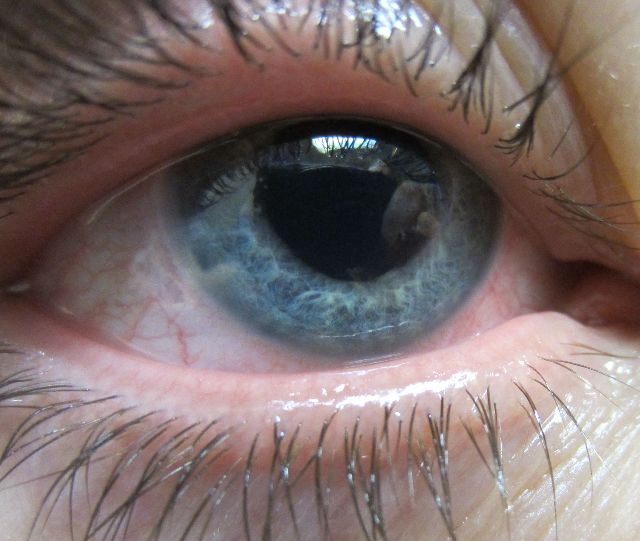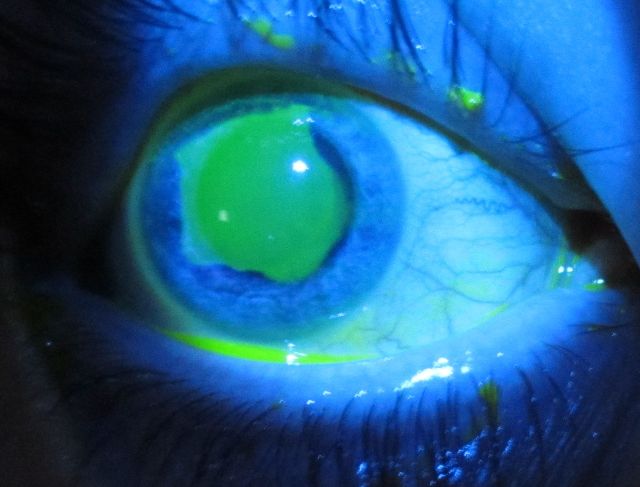Corneal Abrasion
Corneal Abrasion

Our cornea is constantly exposed to the surrounding environment, making it susceptible to injury. Trauma to the cornea can result in corneal abrasion. In this article, we shall take a brief look at this condition.
Causes of corneal abrasion
Trauma is the most common cause. Trauma can result from accidently inserting the finger into the eye, getting hit hard by a foreign object, a projectile that lands in the eye or even just dirt or dust that is rubbed into the eye to relieve the irritation. Wearing contact lenses for prolonged periods of time or even removing them can cause abrasions. Infection of the cornea due to contact lenses such as keratitis due to bacteria such as Pseudomonas aeroginosa can also result in abrasions. Contact lenses therefore need a lot of care when worn regularly.
Another condition that can cause corneal abrasions is called lattice corneal dystrophy. In this condition, protein called amyloid deposits in the corneal stromal tissue, giving it the appearance of a lattice. As it evolves, it becomes opaque, making the cornea cloudy, eroding the corneal epithelium and causing problems with vision. This effect is called epithelial erosion; a condition that can be recurrent. It can not only disrupt vision; it can also damage corneal nerves as well, causing tremendous amount of pain. Corneal erosions that occur when a person is asleep is called Boehm syndrome.
Symptoms and signs of corneal abrasion
Pain is a common symptom as is blurred vision. Patients can become sensitive to light (photophobia), excessive tear production, a constant feeling that there is a foreign body in the eye and squinting. Corneal edema is visible, along with an injected, red conjunctiva, swollen eyelids and enlarged pupils.
Diagnosis of corneal abrasion

Slit lamp examination is an excellent test to make a clinical diagnosis. The cornea is stained using a flourescien dye that makes any abrasions visible with the slit lamp. If a diagnosis is made, causes such as foreign bodies need to be looked for, along with any other signs of injury.
Treatment of corneal abrasion
Small abrasions often settle themselves and do not need any treatment as such. However larger abrasions need treatment, and can include topical cyclopegic drugs to help reduce pain, along with topical antibiotics. However, the need for antibiotics has been questioned by researchers, as numerous patients who do not use antibiotics do not develop an infection at all. The application of a pressure eye patch on the affected eye is also controversial; some studies have shown benefits of reducing trauma to the eye from blinking, while some studies show no benefit. Furthermore, there is evidence to suggest that using pressure eye patches prevents tears from providing the protective effects that it does, especially in contact lens wearers. Pressure bandages, if offered, as applied in phases over a few days.
If contact lenses need to be worn, then soft lenses can be worn as long as it is used with prescription eye drops that contain steroids and antibiotics. In the event of there being recurrent corneal erosions, phototherapeutic keratectomy can be offered.
Complications
These are rare and can include recurrent erosions.
Conclusion of corneal abrasion
Corneal abrasions are caused due to trauma and can result in a variety of symptoms. Treatments include pressure patches and antibiotics, though their requirement depends on the individual patient and varies as per available evidence.
.jpg)

